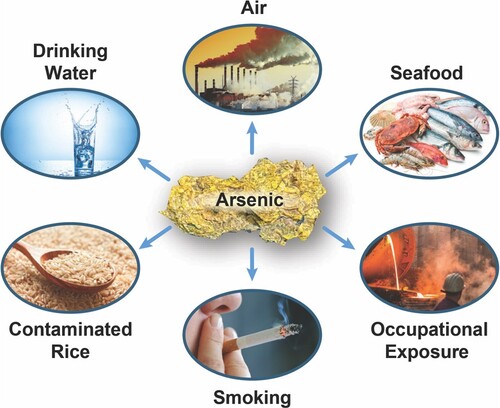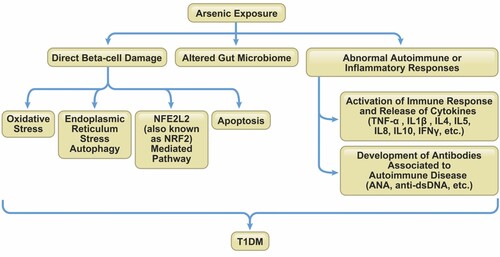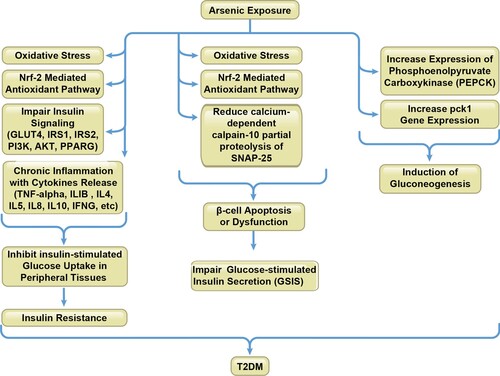Figures & data
Table 1. Effects of arsenic on the immune system.
Table 2. Molecular mechanisms of arsenic-induced immune dysfunction in T1DM.
Table 3. Molecular mechanisms of arsenic-induced immune dysfunction in T2DM.




